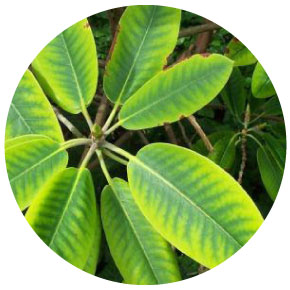Chlorosis Treatment

Chlorosis is a condition that affects trees, resulting in a lack of chlorophyll. An affected specimen experiences a yellowing of its leaves, while extreme cases can lead to a near absence of color. Because chlorophyll is an essential element of photosynthesis, the lessened amount of the biomolecule leads to diminished production of carbohydrates, which in turn can lead to the death of the tree. Some causes of chlorosis include drought conditions, improper drainage, soil that is too tightly compacted around the tree and nutrient deficiencies.
Implementing preventative measures is the best course of action for avoiding chlorosis. Avoid planting trees that are more prone to its effects in soil that is
low in organic matter or that possesses high pH levels. Some nutrient deficiencies caused by high pH levels can be offset by iron supplements, delivered through combinations of magnesium, sulphate or nitrogen compounds. Spraying a tree with a ferrous sulphate solution can achieve results more quickly, although the effects are also more temporary, lasting only between 2 to 3 months.
Trunk injections are another option, but one that should only be performed by a professional arborist. Holes are drilled into the tree’s lower trunk, into which iron compounds are inserted. These compounds can be either dry or liquid. Like any kind of surgery, this procedure can be effective, but can also cause damage to the tree when the openings are being made, so make sure to proceed carefully. Results of a trunk injection can last from 1 to 5 years.

